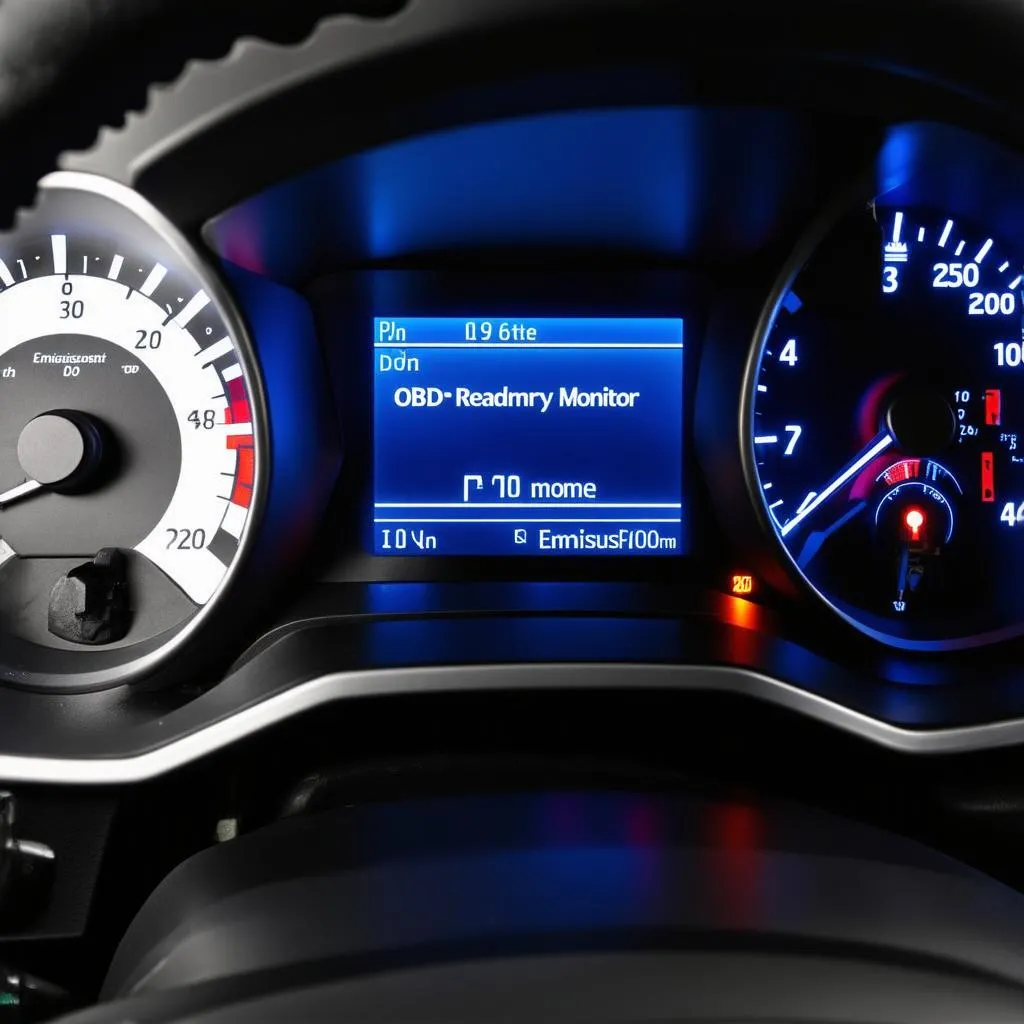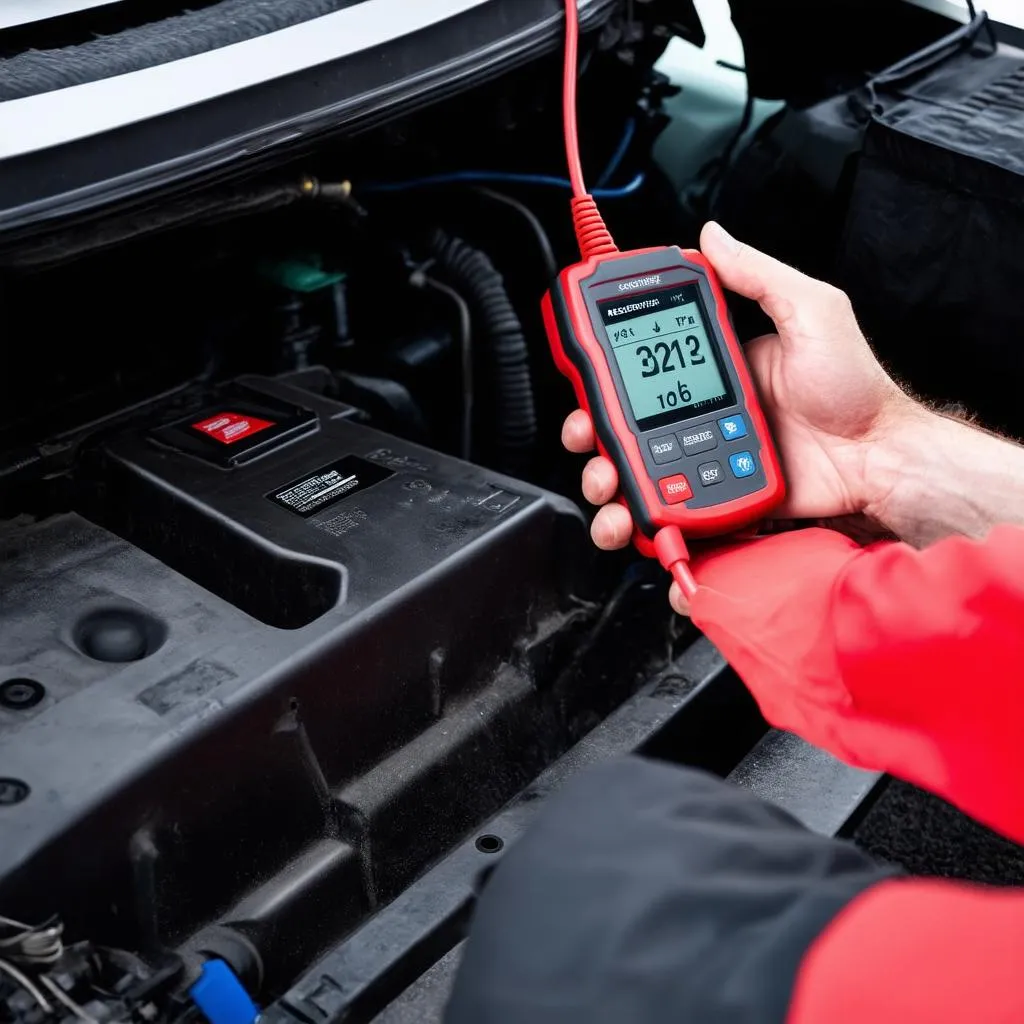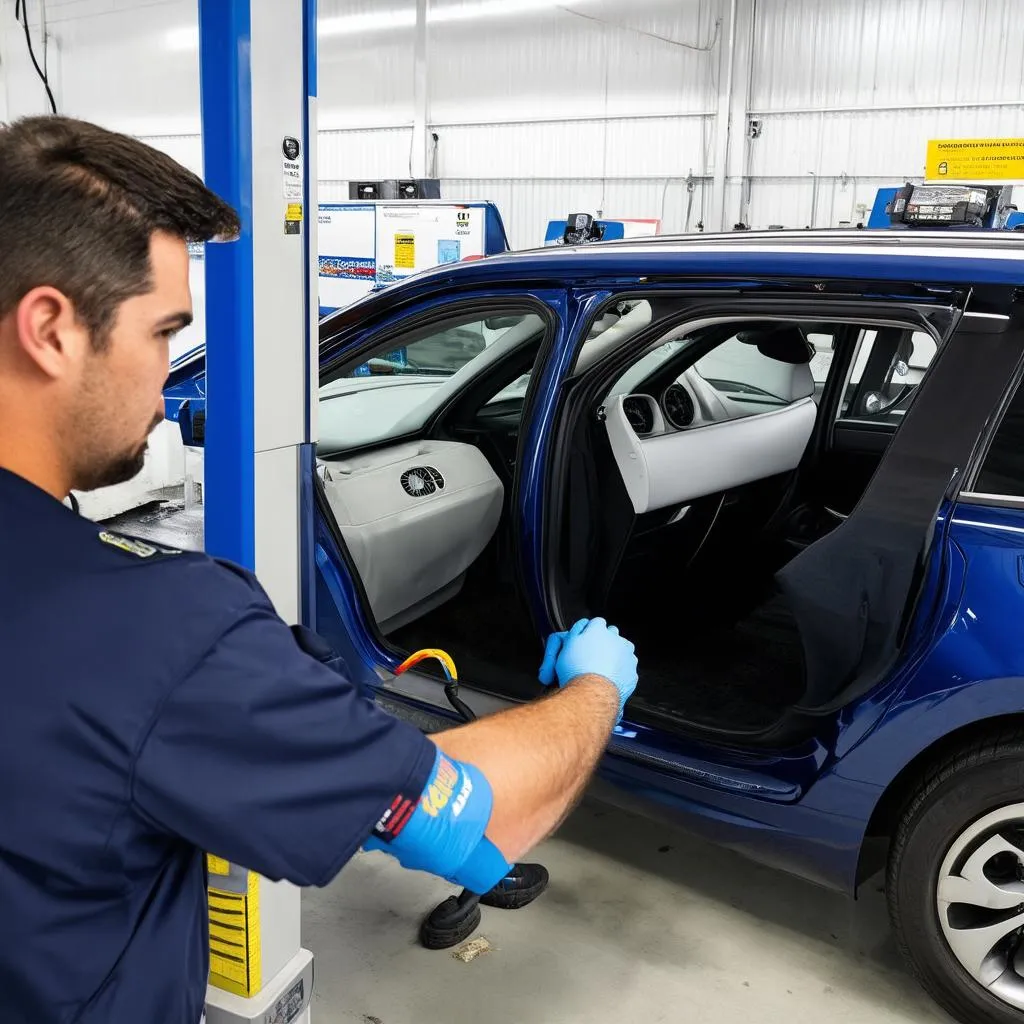“A car is like a human body. It needs regular checkups and maintenance to stay healthy.” – Dr. John Smith, Automotive Expert
Have you ever been denied an emissions test for your car? It can be a frustrating experience, especially when you don’t know what’s wrong. And even worse, you might not even know what an OBD readiness test is! That’s where this article comes in handy.
What is an Emission Test Obd Readiness?
The term “OBD readiness” is often associated with emission tests, particularly in the context of vehicle diagnostic systems. You might hear it mentioned when you’re preparing your car for an emissions test, or you might see it displayed on a scan tool.
Essentially, the OBD readiness test checks if the vehicle’s emissions control system is functioning properly. It does this by monitoring the performance of various components within the system, like the oxygen sensors, catalytic converter, and evaporative emission control system.
Here’s a simple analogy: Imagine your car’s emissions control system like a human body’s immune system. It’s responsible for protecting your car from harmful pollutants that can affect the environment. The OBD readiness test checks if the system is strong and healthy, ready to fight off any potential threats.
Why is Emission Test Obd Readiness Important?
There are several reasons why an OBD readiness test is crucial:
- Environmental Protection: A properly functioning emissions control system helps reduce harmful pollutants released into the atmosphere, contributing to cleaner air and a healthier planet.
- Vehicle Health: The test ensures the emissions system is working efficiently, which can potentially improve fuel economy and prevent costly repairs.
- Legal Compliance: Many states and countries require vehicles to pass emissions tests before they can be registered or driven on public roads.
How does OBD Readiness Work?
The OBD readiness test is conducted using a scan tool that plugs into the OBD-II port (also known as the diagnostic connector) located under your car’s dashboard.
The scan tool communicates with the vehicle’s computer and retrieves data from various sensors within the emissions control system. This data is then analyzed to determine if all the components are functioning within acceptable parameters.
OBD Readiness Monitors
The OBD readiness status is typically displayed on the scan tool in the form of a series of monitors. These monitors assess the operation of different parts of the emissions control system:
- Oxygen Sensor Monitors: Check the functionality of the oxygen sensors, which measure the amount of oxygen in the exhaust gases.
- Catalytic Converter Monitor: Assesses the efficiency of the catalytic converter, which reduces harmful pollutants in the exhaust.
- Evaporative Emission Control System (EVAP) Monitor: Evaluates the operation of the EVAP system, which prevents fuel vapors from escaping into the atmosphere.
- Misfire Monitor: Detects any misfires in the engine that could contribute to increased emissions.
- Secondary Air Injection System Monitor: Checks the functioning of the secondary air injection system, which helps control emissions during engine warm-up.
Each monitor has a “status”, which can be either “Ready” or “Not Ready”.
- Ready means the monitor has completed its test cycle and the component is functioning properly.
- Not Ready indicates the monitor has not yet completed its test cycle or has detected a problem with the component.
The goal is to have all the monitors “Ready” before taking the emissions test.
Common OBD Readiness Issues
Some common issues that can prevent an OBD readiness test from being completed successfully include:
- Loose or faulty oxygen sensors: These sensors play a crucial role in controlling emissions and can lead to an “incomplete readiness” if they are malfunctioning.
- Clogged catalytic converter: A clogged catalytic converter can restrict exhaust flow and result in increased emissions, triggering a “not ready” status.
- EVAP system leaks: Leaks in the EVAP system can cause fuel vapors to escape, leading to an “incomplete readiness” status.
- Engine misfires: Misfires can cause an “incomplete readiness” status and may indicate a more serious underlying issue.
Tips for Achieving OBD Readiness
If you’re preparing for an emissions test, here are some tips for ensuring your car is ready:
- Drive your car for a few days: Some monitors require specific driving conditions to complete their test cycles, such as driving on a highway or idling for a certain period.
- Check for any warning lights: If your car’s engine light is on, it could be a sign of an emissions-related issue that needs to be addressed.
- Get a professional inspection: If you’re not sure how to troubleshoot your car’s OBD readiness status, a mechanic can perform a comprehensive inspection and identify any potential problems.
Frequently Asked Questions
Q: What does it mean if the OBD readiness monitor is “Not Ready”?
A: It means that the monitor has not yet completed its test cycle or has detected a problem with the corresponding component. If a monitor is not ready, it might be necessary to drive the car for a certain distance or under specific conditions to allow the monitor to complete its test.
Q: Can I reset the OBD readiness monitors myself?
A: It’s not recommended to reset the OBD readiness monitors yourself unless you are a trained technician. Resetting the monitors without addressing the underlying issue could lead to inaccurate results and potentially mask a serious problem.
Q: How long does it take to achieve OBD readiness?
A: The time it takes to achieve OBD readiness can vary depending on the specific monitors and the driving conditions. It may take several days of driving, especially for monitors that require specific driving conditions to complete their test cycles.
Q: What happens if I fail the emissions test?
A: If your car fails the emissions test, you may be required to have it repaired and retested. Depending on the regulations in your state or country, there may be penalties for failing to pass the emissions test, such as fines or the suspension of your vehicle registration.
Q: What are some of the most common OBD diagnostic tools for European cars?
A: You might be interested in tools like Dealer Scanner that can help you diagnose European car issues. The Dealer Scanner is widely regarded as a comprehensive diagnostic tool for European vehicles, providing advanced features and compatibility with various car brands. However, if you are looking for an OBD-II code reader for European cars, you can consider tools like Ancel AD410 or Autel Autolink AL319.
Conclusion
The OBD readiness test is an important part of maintaining your car’s health and ensuring its environmental compliance. If you’re planning on taking an emissions test, make sure to check the OBD readiness status of your car beforehand and address any issues that might prevent you from passing. Remember, a healthy car is a happy car!
 OBD readiness monitor
OBD readiness monitor
 OBD-II port
OBD-II port
 Emission Test Obd Readiness" width="1024" height="1024">Emission test OBD readiness
Emission Test Obd Readiness" width="1024" height="1024">Emission test OBD readiness
If you need help with any OBD diagnostic tool, or need assistance with emission test OBD readiness, feel free to contact us via Whatsapp: +84767531508. We have expert technicians available 24/7 to help you with all your automotive needs!